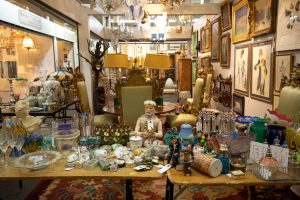Plumbing is the system of pipes and fixtures that deliver safe, potable water into buildings and remove wastewater. Its critical components include the supply lines, drainage systems and vents. These systems are designed with gravity in mind and rely on calculated pitches to convey wastewater to the sewer or septic system.

The basics of plumbing involve a complex network of pipes, fixtures, and other apparatus that supply water for different purposes in buildings and remove wastewater. Understanding the role of each component in a plumbing system allows you to maintain it and spot problems that need professional attention. You should also know the general rules that govern plumbing practices, such as the International Plumbing Code (IPC). Contact Castle Rock Plumbing to learn more.
A pipe is a long tube used to transport liquids or gases in heating, cooling, and industrial systems. It can carry potable water, waste products, fire-suppression fluids, or other materials. In the context of home plumbing, a pipe connects a building to the city water service and delivers pressurized water into sinks, toilets, and other fixtures. It also takes wastewater away and carries it to a sewer or septic system. In order to function properly, a pipe must have the proper slope and air pressure.
Most homes have two distinct plumbing systems: a water supply system and a drainage system. The water supply system brings in freshwater through a main pipe from the street or from a well, while the drainage system manages waste disposal and sewage. These systems are kept separate to prevent health and safety risks. Water from the supply systems enters homes through a series of valves and faucets, and then flows into fixtures like tubs, showers, and sinks. The waste from these fixtures then flows into the drain pipes, where it is carried away by gravity and air pressure to the sewer or septic system.
The plumbing system also includes a network of vents that allow air to enter the pipes and release waste gasses. These systems are crucial to preventing leaks and clogs, but they must be properly installed in order to be effective. The IPC sets uniform standards for drain, venting, and fixture installation to ensure that all plumbing work meets professional standards.
Federal and State Regulations
Licensed plumbers must follow national and state regulations that govern the installation, repair and maintenance of all plumbing fixtures. These regulations are designed to keep water safe and hygienic, and to minimize the risks of plumbing failures like backflow, pipe leaks and structural damage. Typically, these regulations include specific guidelines for materials, sizing and equipment used to prevent potential health hazards.
The state of Oklahoma follows a set of specific plumbing regulations to ensure the safety and functionality of all installed systems. These regulations are based on the International Plumbing Code (IPC), and they include detailed standards for pipe sizes, material specifications, and piping layout. They also include regulations regarding venting, backflow prevention, and adequate water pressure. In addition, state law requires that all plumbing work be performed by a licensed professional who meets state educational and practical training requirements. In addition, all plumbing work must undergo regular inspections to ensure compliance with local building codes.
In addition to regulating the installation of plumbing systems, federal and state regulations establish a standard for water quality and waste disposal practices. These regulations are designed to protect human health, promote environmental sustainability and encourage best industry practices. They cover everything from the use of lead-free, corrosion-resistant materials to the proper operation of water heaters and sewage disposal systems. They also regulate the amount of water that can be drawn from public and private water supply systems, and require backflow prevention devices to prevent contaminated water from entering potable water supplies.
As an aspiring plumber, it’s crucial to understand the complexity of these compliance laws and their impact on your career. Working with a knowledgeable and supportive plumbing supply house, like Victoria Plumbing & Heating Supply, can help you stay ahead of the curve when it comes to ever-evolving compliance standards.
Local Regulations
Local plumbing codes are set by municipalities to regulate building and construction standards, ensuring everything from water supply lines to sewage systems operate efficiently and safely. Whether you’re planning a complete bathroom remodel or a simple fixture swap, it’s important to understand how your local plumbing code works so that your renovation passes inspection and meets all necessary standards.
While national standards like the International Code and Uniform Plumbing Code serve as models for most areas, local authorities often amend these rules to fit their specific needs. These amendments might cover a variety of different installation techniques, materials, or fixture types. Staying up-to-date on these changes will help you avoid costly rework down the road.
It’s also essential to familiarize yourself with the requirements of your local building department, especially if you’re hiring an outside contractor. Make sure they’ve obtained all the necessary permits before starting any work, and be wary of anyone who claims to be able to circumvent these regulations.
Some common local code issues include:
Improper Venting: Poorly vented drainpipes can cause odors and increase drainage problems in your home. Make sure to double-check pipe placement and follow manufacturer guidelines to ensure compliance.
Ignoring Backflow Prevention: Failure to include backflow prevention devices in your home can result in dangerous and expensive plumbing problems. Always check local backflow requirements and make sure to follow all manufacturer guidelines to prevent leaks and backflow.
While understanding the ins and outs of your local plumbing code may seem daunting, it’s a critical part of keeping your home safe and your renovation on schedule. By educating yourself about these laws and working with a professional plumber, you can rest assured that your renovation will meet all local standards and won’t face any unnecessary delays or fines down the road.
EPA Regulations
EPA regulations govern water quality standards and the construction and operation of drinking water systems. For example, EPA regulations require the use of lead free plumbing materials in new and replacement pipes, fittings and fixtures. The lead content in these products is limited to less than two percent of the weighted average wetted surface area for pipes and 0.25 percent for solder and flux. EPA regulations also require the certification of manufacturers or importers of these plumbing materials, and the testing and verification of their compliance. Counties play an important role in administering these rules, as they are major owners, users and regulators of local public drinking water resources and systems.
The EPA’s national primary drinking water regulations (NPDWRs) establish criteria for microbial contaminants such as total and E. coli bacteria. These criteria are used by EPA and authorized state agencies to develop drinking water standards. NPDWRs also include monitoring and system reporting requirements. During Six-Year Review 4 of the NPDWRs, EPA evaluated whether microbial contaminants require additional implementation provisions (e.g., monitoring and treatment technique (TT) requirements). The review protocol focused on issues that are not addressed by alternative mechanisms such as through a recently completed or ongoing EPA rulemaking.
The EPA regulates the discharge of pollutants into waters of the United States through the National Pollutant Discharge Elimination System (NPDES). NPDES permits contain various limitations, including numerical effluent limitations, technology-based limitations and non-numerical or “narrative” limits. Failure to comply with a permit limitation can result in civil and criminal penalties. The EPA and authorized state agencies publish the NPDES requirements in a national standards manual called the WQS Handbook. The EPA also maintains a database of information that is relevant to the NPDWRs.
Plumbing History
Plumbing is one of the most important innovations in human history. It helps us live more comfortable lives, allowing us to wash clothes and dishes, water our gardens, and clean and cook meals. In addition, plumbing allows for the removal of waste from our homes and businesses.
The first instances of plumbing can be traced back to ancient civilizations. The Egyptians used copper pipes to build public baths and aqueduct systems, while the Greeks and Romans improved upon these ancient technologies. By the 1800s, plumbing had reached new heights. The first major sewer system was constructed in London, which revolutionized sanitation by removing sewage from cities and towns. This reduced disease and allowed for a more enlightened era of living.
Today, plumbing is regulated to ensure the safety of its users. Pipes must meet minimum standards of thickness and materials to prevent clogs, leaks, and other issues. The majority of plumbing in the United States is made from galvanized iron or copper. However, plastic pipes are becoming more popular due to their durability and low maintenance costs. Water conservation laws have also prompted many homeowners to switch to low-flow toilets, which use less water per flush.
If you’ve ever wondered how plumbing got to where it is today, there are a few interesting facts about the history of this important technology. For example, did you know that indoor plumbing began with an early version of the toilet? Or that the first flushing toilets discarded excrement into moats? Learn more about the fascinating history of plumbing, including who invented the toilet and when indoor bathrooms became common. You’ll be amazed at how far this essential technology has come in such a short amount of time.

